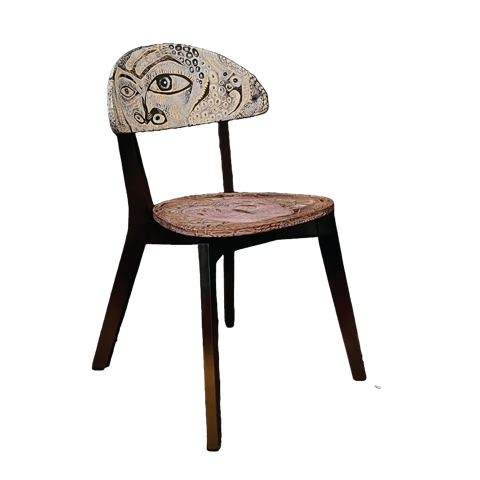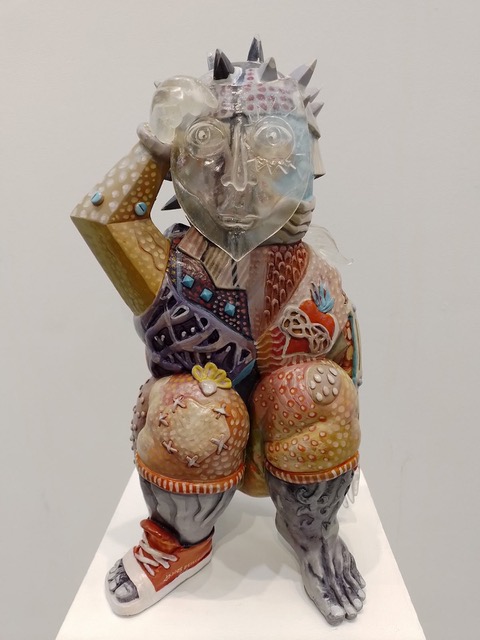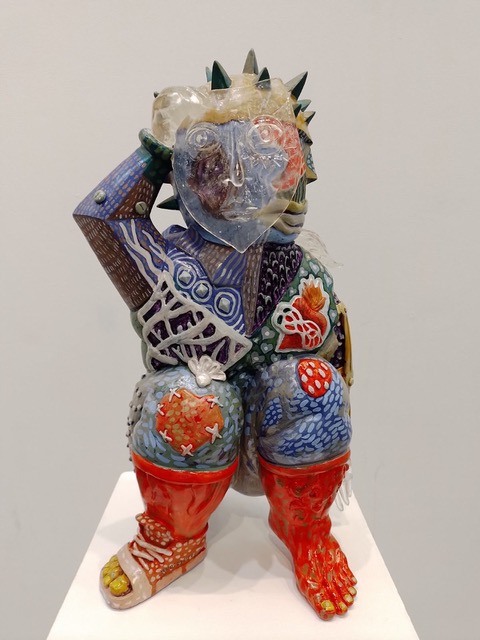In his ongoing one-man series for Art Lounge Manila, the artist also makes a commentary on people’s attempts to hide their beliefs and true selves just to conform with social pressures, norms and biases.
Artist Janos Delacruz is holding a one-man show at Art Lounge Manila’s Podium gallery in Ortigas Center. Dubbed as “Pagibig at Lumbay,” the show will run until tomorrow, Aug. 16.
It is described as a collection of artworks that tackles a journey of adoration and unrequited love between artist and his muse amidst the pandemic. Although Janos’ icons do not revolve around a particular key image or subject, each artwork is intended to be viewed as a chapter illustration of an unwritten novel (a self-contained short story in an ongoing narrative). The artist invites us to explore his machination and inner musings as he moves from one diatribe to another.
The paintings, sculptures, drawings and fine print in the exhibition are used as vehicles to capture the frantic search for both meaning and creation. Our eyes are invited to matriculate the etched lineal and spiral patterns, as if we’re looking at striations of exposed musculature under a microscope. The viewer is asked to participate and reflect on each artwork to create his own truth and find his own narrative in each panel.
Janos’ drawings, meanwhile, is an assemblage of random lines and patterns. A seemingly unfiltered surreal idea from an incomplete dream to a fully rendered work on paper. As he transforms his work from one medium to another, the artworks also evolve–affected by limitation and advantages of the material, but also the temperament of the creator.
Artworks are rendered in black and white perhaps because of Janos’ continuing fascination with the art of printmaking, which is his first love. Inspired by illustrated medieval manuscripts, the artist left the impurities in the plate and hand-colored his etching fine prints. By doing so, he hopes to capture “individuality in the face of uniformity,” he says.
His sculpture entitled “Kuya Daks,” for instance, tells the story of a man in his most fragile state – removing the “smiling mask” that he showcases to society. The artwork is a commentary on hiding your beliefs and true self as we try to conform to social pressure, norms and biases. It represents the reawakening of unique thought and removal of the shackles of docility. To be able to love freely and to create without limitations.









